This project delves into questions about the origins of life and the principles of abiogenesis—the transformation from non-living (abio) to living (genesis) matter. Traditionally, life’s emergence from non-life around four billion years ago is viewed as an extraordinary event, one that took millions of years to unfold and eventually diversified into the myriad forms we see today. But what if life is not the exception in our universe, but the rule? Could life emerge not as an anomaly but as an inherent property of existence itself, arising naturally and inevitably?
A central aim of this project is to examine life as a principle intrinsic to reality. By drawing parallels between microbiological processes and digital technologies, we question our perception of life as solely organic, separate from technology, which is often dismissed as sterile and lifeless. Computers, after all, are born of stone, fossilized life compressed and reformed. They could be seen as another form of expression by stone—a recursive pattern of organization. James Bridle eloquently captures this with the idea that "computers are made out of stone and the compressed relics of animals and plants…in turn, they speak like stone." This perspective invites us to reconsider our technology as an extension, rather than a contradiction, of nature.
Through artistic research, this project explores self-organizing, recursive patterns within technological realities, challenging the idea that technology is merely a parasite feeding off human invention. In tandem, a series of experimental visual artworks will visually complement this inquiry, examining how digital forms can embody or even simulate aspects of organic life, and in turn also examining the imagery that goes parallel to this.
This brings us to the perennial question: What is life? Despite advances in biology, chemistry, and philosophy, a definitive answer remains elusive. Perhaps our inability to pin down a definition hints at a deeper truth—that life is more than organic matter. Could life be the essence of reality itself, omnipresent and manifesting in various forms, whether biological or digital? Might technology, too, be a fundamental expression of the natural order?
In this sense, technology is not merely a tool but a new vocabulary—one that provides mental models and metaphors to describe processes that have long existed in the more-than-human world. Our "technological ecology," allows us to perceive the analogies between digital systems and natural ecosystems, shedding light on the subtle, often hidden patterns that define all of existence. Thus, through the language of technology, we gain insight into the universe’s self-organizing, life-like characteristics.
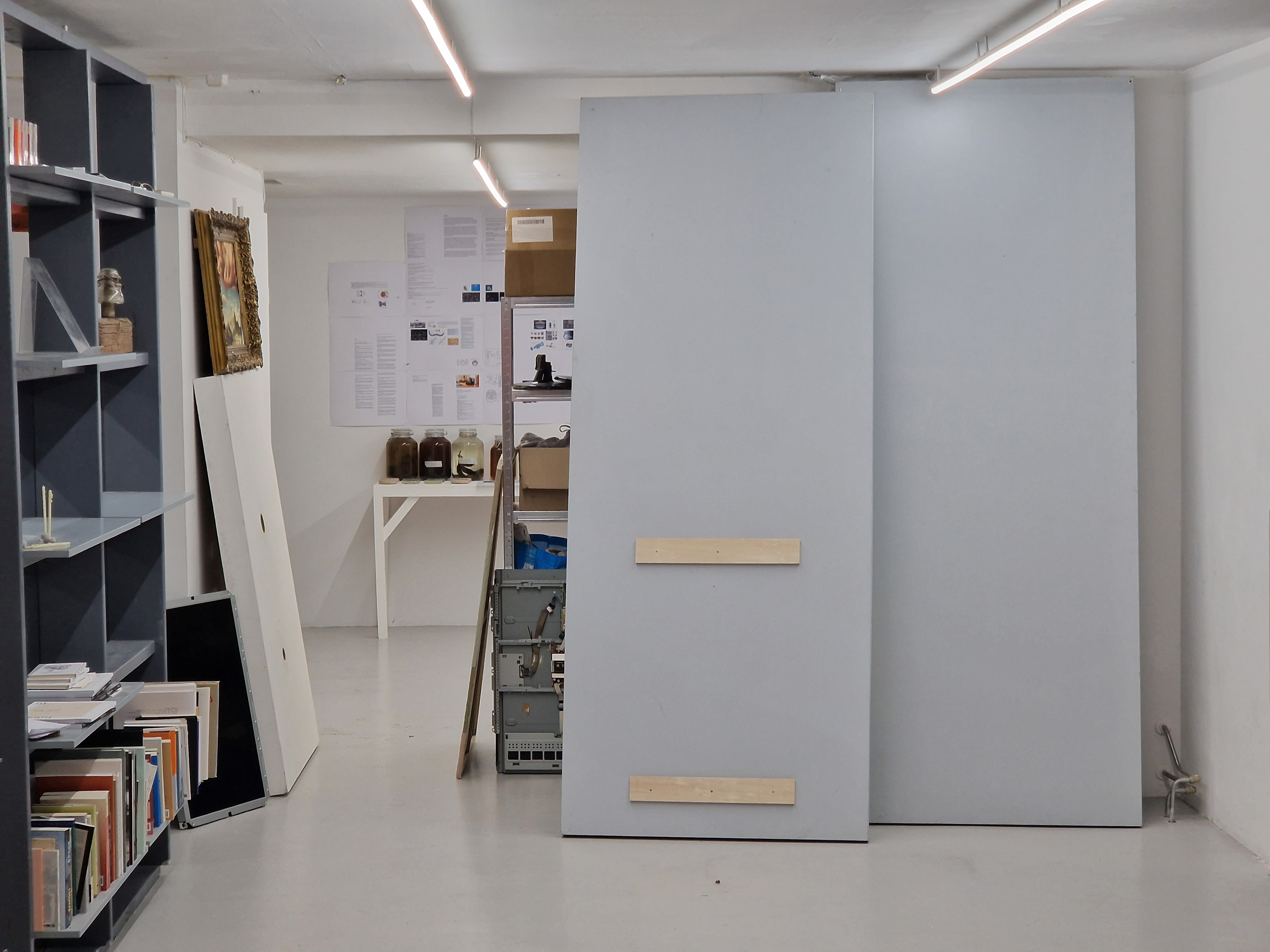
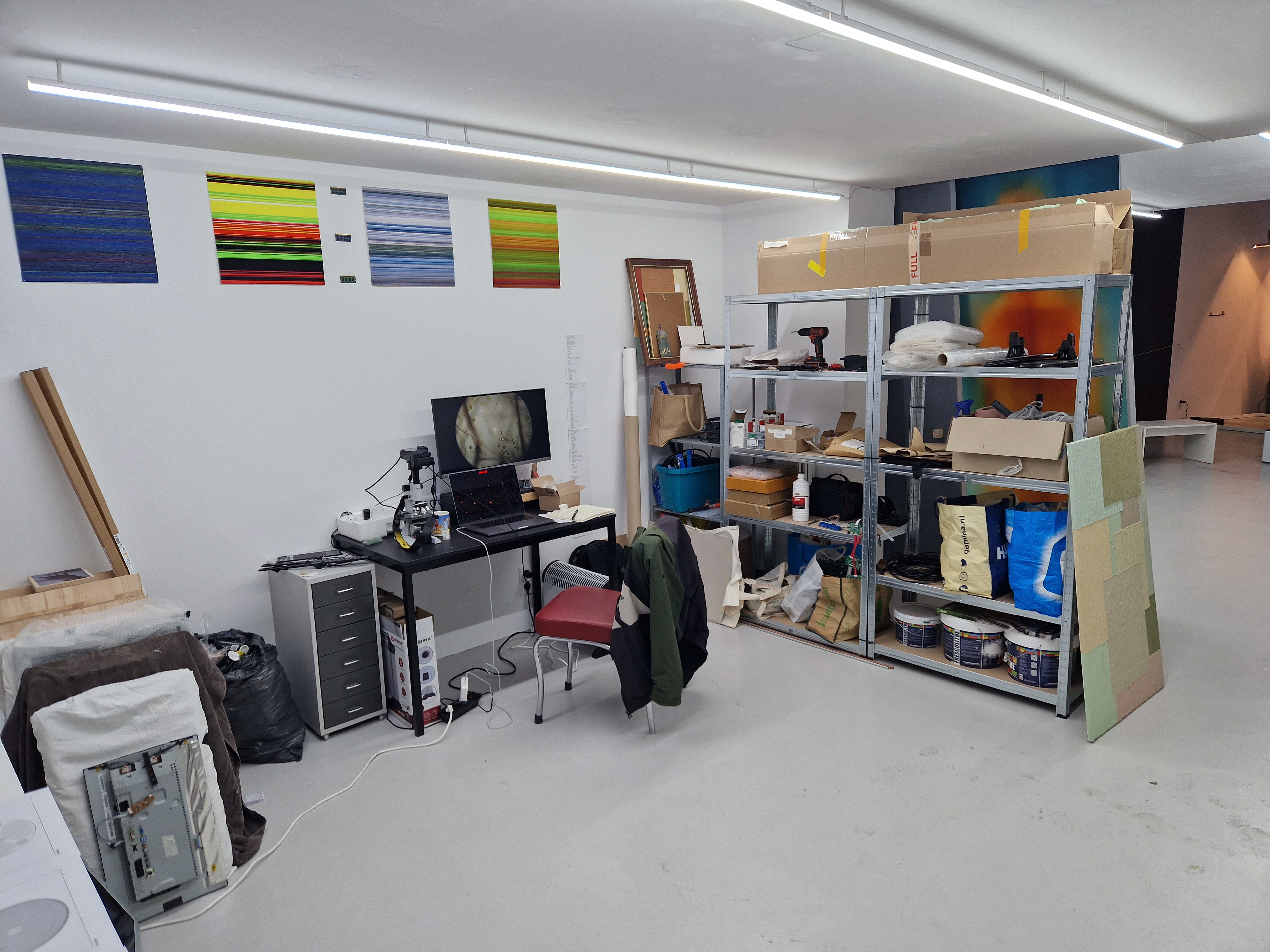
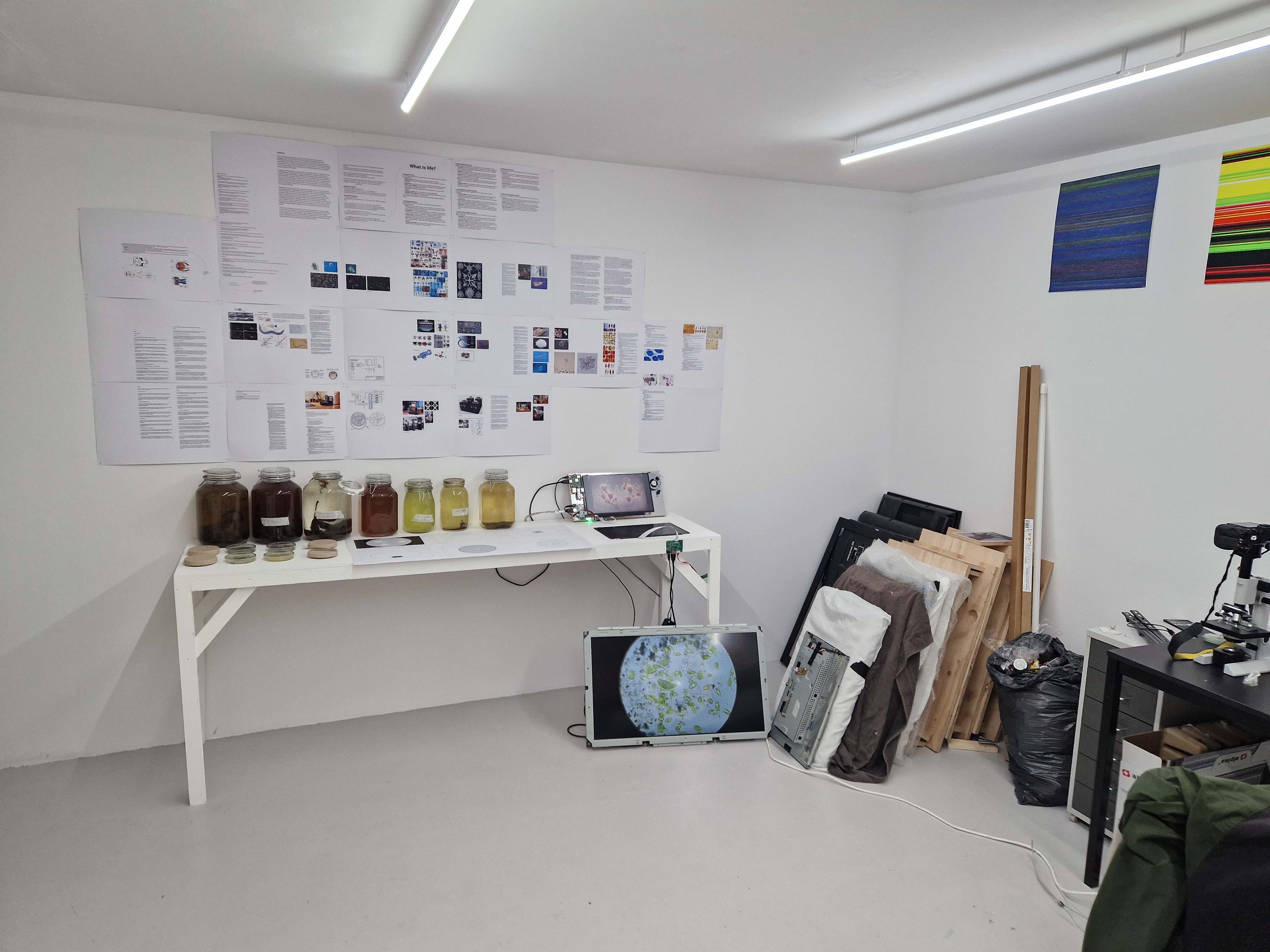
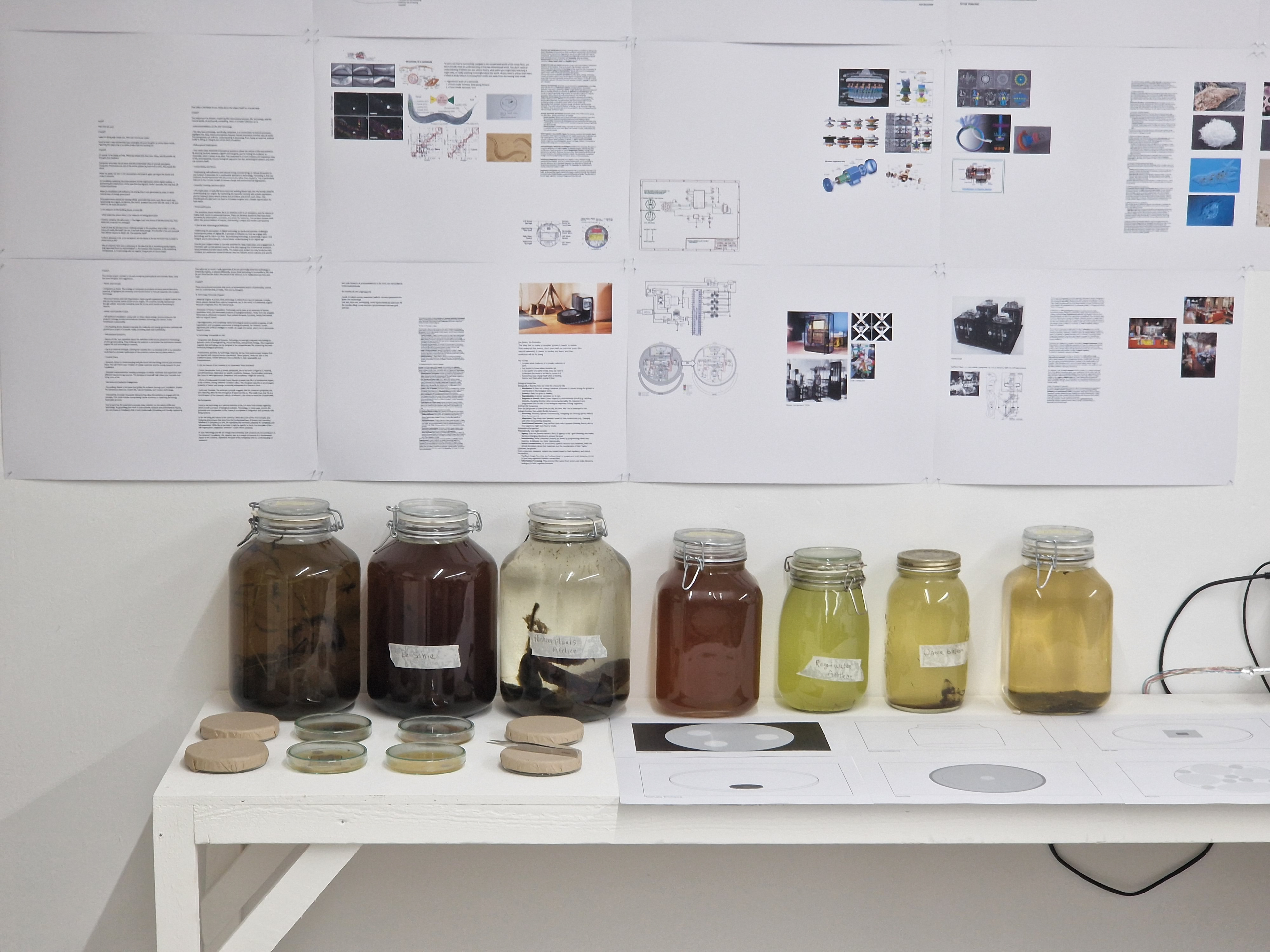
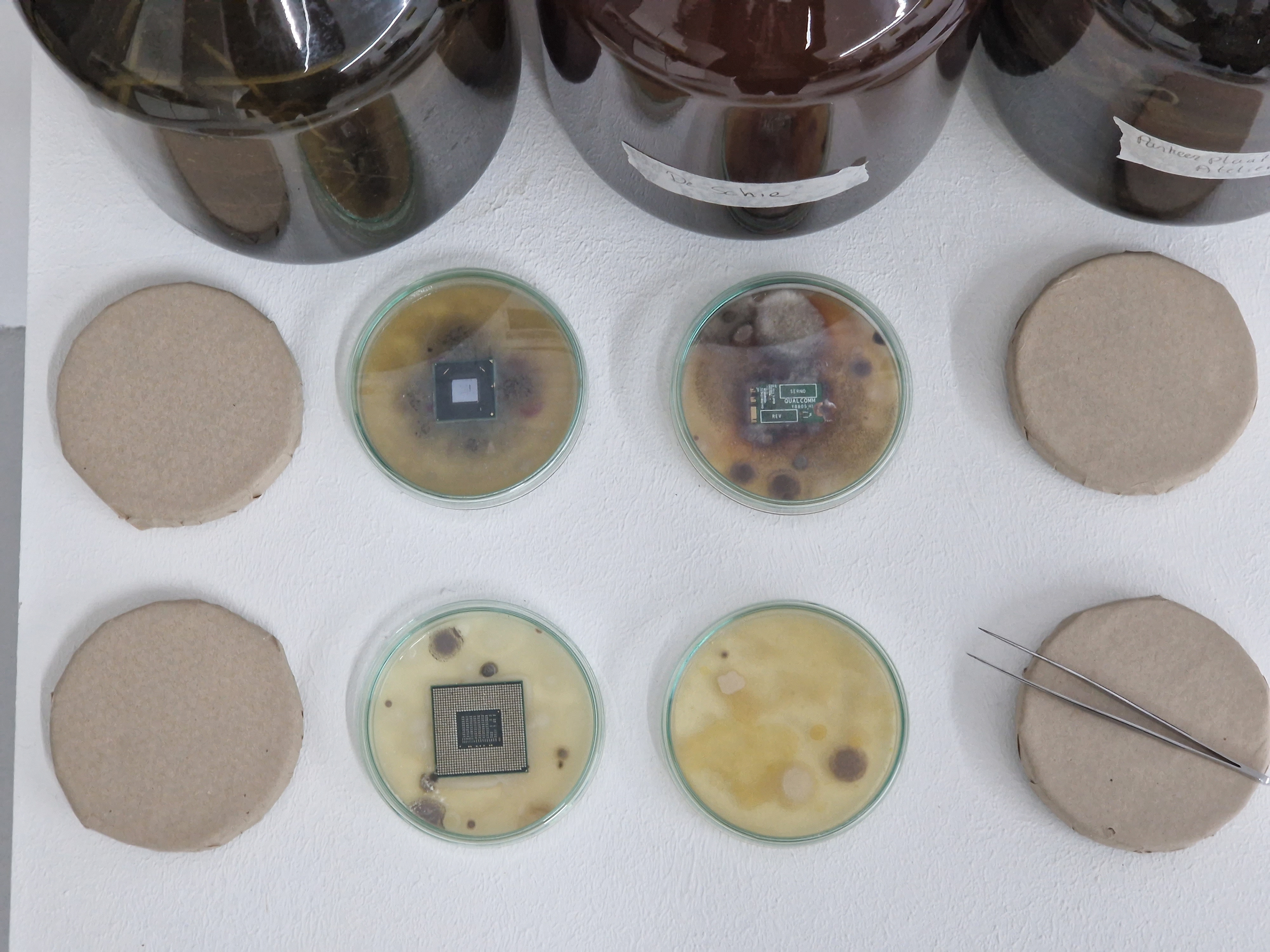
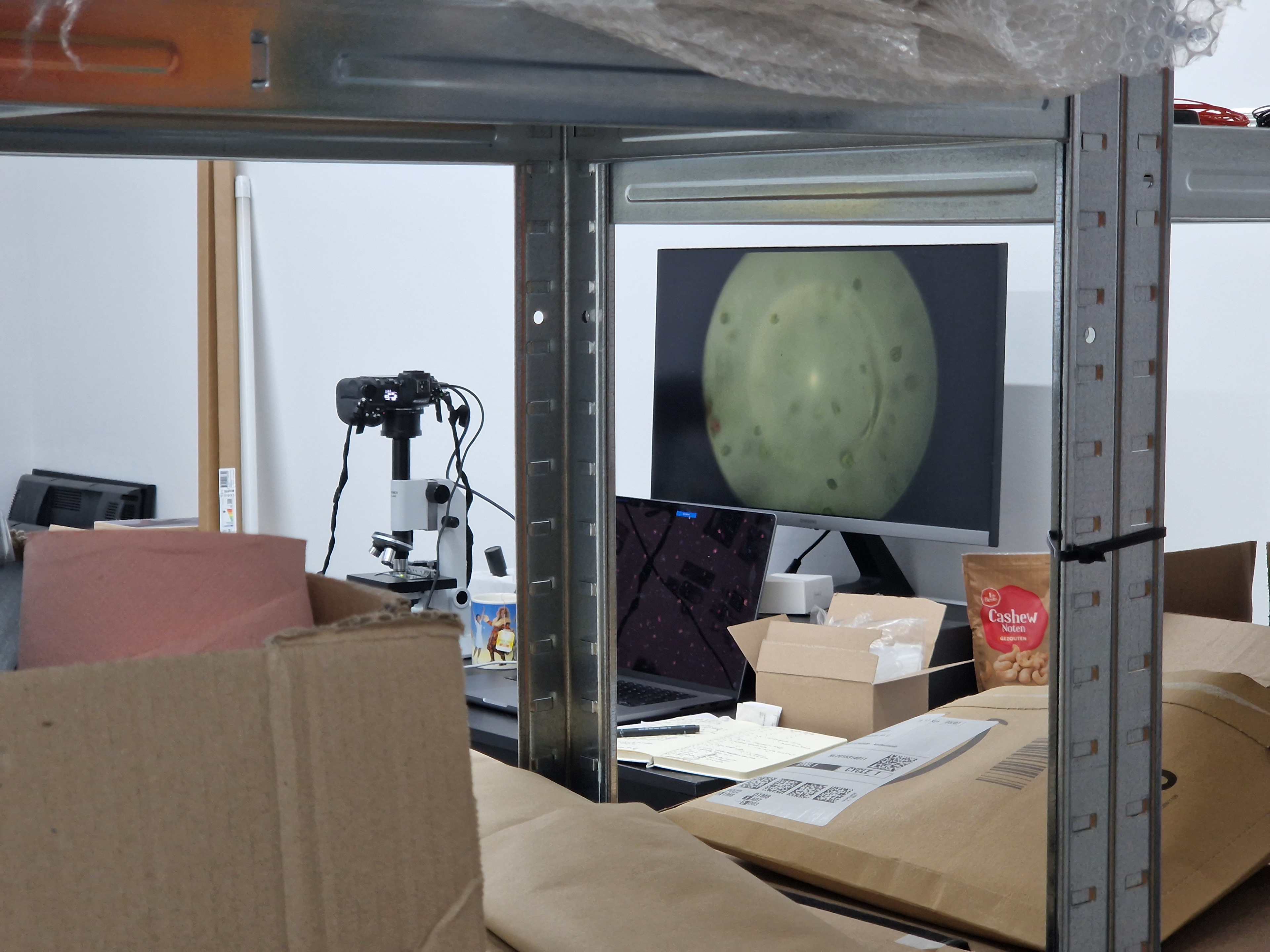
Exhibiting this body of work at RIB-Rotterdam, I transferred my entire studio to the presentation space 1-to-1. By showcasing and presenting on-going research, the presentation aimed to invite the visitor into this "informal" space to spark conversation regarding the topic.